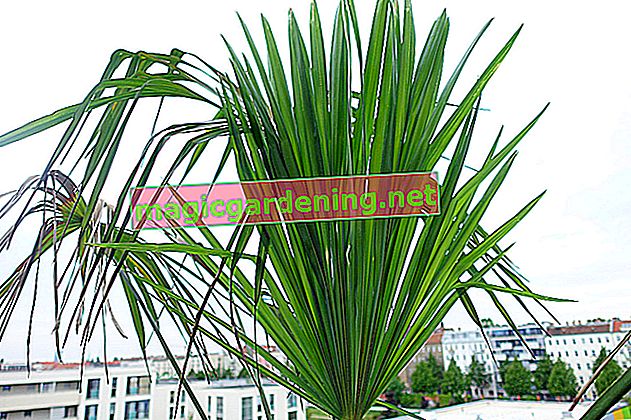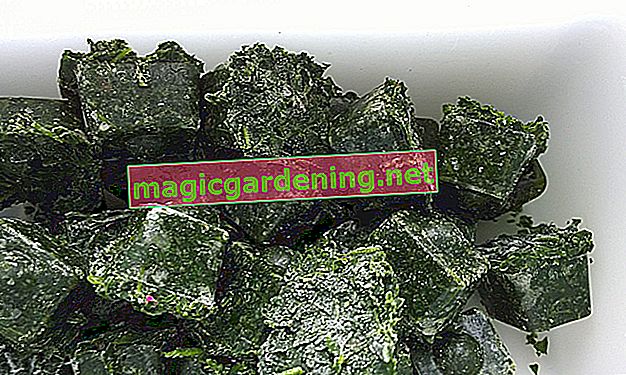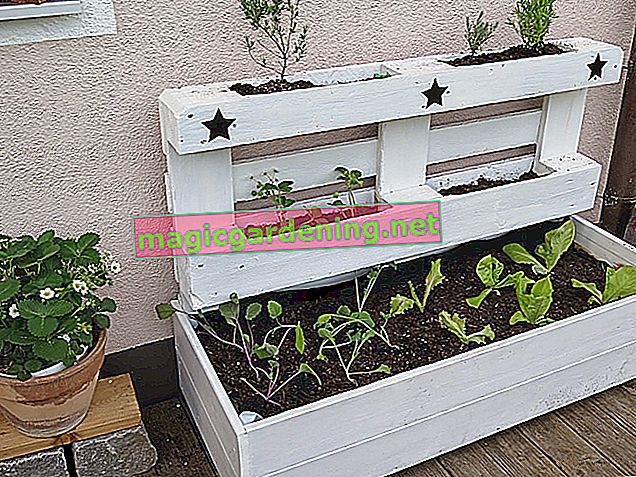
The water requirement
This palm loves it neither very dry nor very wet. Always keep the bale slightly damp and water whenever the top inches of the substrate feel dry.
also read
- Yellow leaves of Kentia palm - signs of pests
- Do not water the Kentia palm too much
- Why does the Kentia palm get brown leaves?
Like all palm plants, the water of the Kentia palm must not be too calcareous. In regions with very hard water, use a suitable filter or at least let the irrigation water stand overnight.
Regular spraying of the attractive leaves is also recommended.
How is fertilization done?
As with all slow-growing palms, the Howea must never be overdosed. It is sufficient to provide the plants with a palm fertilizer every 14 days during the summer months. If you prefer the weekly fertilization, you may only administer half the dose.
When does it have to be repotted?
With good care, the Kentia palm can also reach room height in the room. The pot should therefore:
- big enough
- quite high
- steadfast
- stable
to get voted.
It is always repotted in spring, as the roots then recover more easily from the rigors of this care measure. It is either implemented at regular intervals every two years or at the latest when the old pot has obviously become too small.
Are cutbacks necessary?
As a rule, you don't need to cut the Kentia palm's fronds. You can only shorten dried up or disturbing foliage near the ground.
Diseases and pests
It happens again and again that a healthy Howea suddenly turns brown and dies. In most cases this is caused by the gliocladium tuber rot. Only quick action helps here:
- Cut off affected parts of the plant.
- Carefully remove the old substrate from the root ball.
- Put in fresh soil and a new pot.
- If the already used planter or saucer is to be used again, it is essential to boil it out.
Too much watering promotes root and leaf rot. You should therefore urgently avoid waterlogging and add an additional drainage layer to the pot. Pour away excess water in the saucer after half an hour at the latest.
Unfortunately, the Kentia palm is often attacked by woolly insects, scale insects, thrips and spider mites. The only preventative help here is to increase the humidity by regularly moistening with a sprayer. If you discover the sucking insects, the use of a suitable insecticide is recommended.
In the winter
Since the Kentia is usually in the room all year round, wintering is quite easy. It is only necessary to water the plant a little less during hibernation. There is no fertilization at all during this time.
Tips
Since the Kentia palm grows very slowly, it is important to regularly check the fronds for pests. Fight the insects with a suitable agent in the early stages. If you had to cut off numerous leaves because they have become unsightly discolored, it can take years for the optical impairments to grow together.









